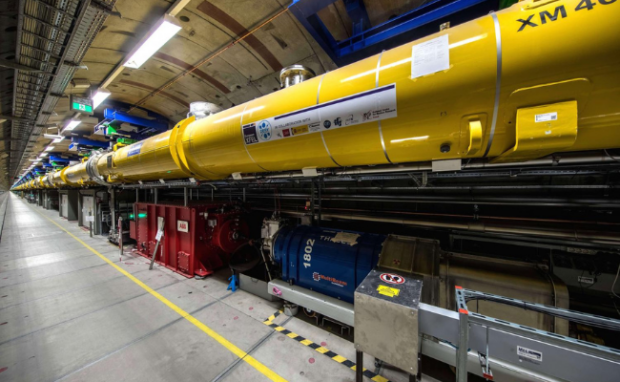Scientists deflect lasers with air
Most know lasers as concentrated beams of light, so it makes sense that you need a reflective surface like a mirror to bounce them back. However, a group of scientists found a way to use ordinary air to deflect lasers. They used soundwaves to create air “layers” with different densities, inspired by how Earth’s atmosphere deflects sunlight with its air.
Yannick Schrödel, the lead researcher for this unique study, said it has amazing implications for modern optics, the study of light. He says it mostly focuses on the interaction of light with solid matter, but that may change as he proved you can manipulate light with air. You’ll see the laser deflection’s timely applications if you know the latest laser projects!
This article will discuss how scientists made air deflect lasers by applying sound. Later, I will compare it with other emerging laser technologies.
How did scientists deflect lasers with air?

Photo Credit: gearrice.com
The Earth’s atmosphere deflects most sunlight and other harmful light with its air layers of differing densities. Yannick Schrödel emscienceulated that mechanism by applying sound to ordinary air.scienc
He’s a Ph.D. student at the Deutsches Elektronen-Synchrotron (DESY), Germany’s national research center for fundamental science. “We’ve generated an optical grating with the help of acoustic density waves,” he said.
“However, deflecting light by diffraction grating allows much more precise control of the laser light compared to deflection in the Earth’s atmosphere,” stated Schrödel. “The properties of the optical grating are influenced by the frequency and intensity – in other words, the volume – of the sound waves.”
The volume was around 140 decibels, which is like standing in front of a jet engine. Fortunately, the scientists used ultrasound, which human ears can’t detect.
Christoph Heyl from DESY explained, “We are moving at a sound level of about 140 decibels, which corresponds to a jet engine a few meters away. Fortunately, we are in the ultrasound range, which our ears don’t pick up.”
Initial lab tests showed the method can redirect a strong infrared laser at 50% efficiency. They used an infrared laser pulse with a peak output of 20 gigawatts, roughly as powerful as two billion LED bulbs.
You may also like: NASA testing laser communications system
Beams of that caliber are for material processing, fusion research, or the latest particle accelerators. Still, the experiment was able to deflect that high-intensity laser.
“In this power range, the material properties of mirrors, lenses, and prisms significantly limit their use, and such optical elements are easily damaged by strong laser beams in practice,” explained Heyl.
“In addition, the quality of the laser beam suffers. We’ve managed to deflect laser beams in a quality-preserving way without contact,” he added. As mentioned, deflecting lasers with air is a groundbreaking discovery.
What are some other laser projects?

Photo Credit: phys.org
Discussing how air can deflect lasers is already extraordinary, so why not discuss another relevant experiment? The Chinese military developed a way to fire lasers indefinitely.
Lead researcher Yuan Shengfu said, “Since the invention of the first ruby laser in 1960, people have been enthusiastic about transitioning from kinetic energy to laser energy for the rapid projection of energy at the speed of light, dreaming of laser beams to become ‘death rays’ that can instantly kill targets.”
“Unfortunately, 60 years have passed, and while various types of lasers have been developed, the application of high-energy laser systems has not been successful,” scientists added. In contrast, the Chinese laser marks “a huge breakthrough in improving the performance of high-energy laser systems.”
It is likely an application of Shengfu’s August research regarding a laser weapon cooling system. It blows helium gas through the weapon’s nozzle to prevent overheating, allowing the armament to fire nonstop.
You may also like: Laser vs inkjet printers
Could the air that deflects lasers be strong enough to block this weapon? Perhaps it could test the limits of this air-deflection experiment. Another cool laser project involves X-rays.
The US Department of Energy’s SLAC National Accelerator Laboratory fired the world’s largest X-ray laser last month. Unlike the Chinese laser, this one has a more peaceful purpose.
Believe it or not, it will provide “unprecedented insights into chemical and biological reactions.” Also, the X-ray beam can open more applications like sustainable manufacturing, ultrafast computing, and renewable energy.
Conclusion
Scientists developed a way to manipulate air so that it can deflect lasers. It uses varying ultrasound frequencies to have air layers with different densities.
The project could open more optics experiments previously impossible with lenses, prisms, and mirrors. Unlike the latter, air layers are unlikely to degrade or break.
Get more details about this project on the DESY website. It also has a nifty animation illustrating how the air bounces back light. Learn more about the latest digital tips and trends at Inquirer Tech.